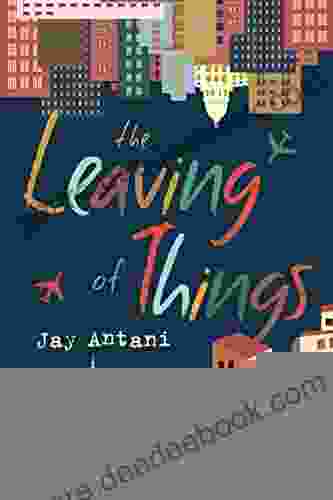Teaching Adolescents With Autism: A Comprehensive Guide for Educators

4 out of 5
| Language | : | English |
| File size | : | 10793 KB |
| Text-to-Speech | : | Enabled |
| Enhanced typesetting | : | Enabled |
| Word Wise | : | Enabled |
| Print length | : | 408 pages |
| Lending | : | Enabled |
| Screen Reader | : | Supported |
Understanding the Unique Needs of Adolescents With Autism
Adolescence is a transformative period for all individuals, but for adolescents with autism, this transition can pose unique challenges. This period is characterized by rapid physical, cognitive, and emotional changes, and adolescents with autism may experience difficulties in coping with these changes and adapting to the demands of adolescence.
To effectively teach adolescents with autism, educators must have a deep understanding of their unique learning styles and needs. These may include:
- Difficulty with social interaction: Adolescents with autism often struggle with social cues and may have difficulty initiating and maintaining relationships.
- Repetitive behaviors or restricted interests: Adolescents with autism may engage in repetitive behaviors, such as rocking or flapping their hands, or have intense interests in specific topics.
- Sensory sensitivities: Adolescents with autism may be sensitive to certain sensory stimuli, such as loud noises or bright lights.
- Challenges with executive functioning: Adolescents with autism may have difficulty with planning, organizing, and managing their time.
- Communication difficulties: Adolescents with autism may have difficulty expressing themselves verbally and nonverbally.
Effective Teaching Strategies
Based on the understanding of their unique needs, educators can implement a range of effective teaching strategies to support adolescents with autism. These strategies include:
- Visual aids: Using visual aids, such as charts, maps, and diagrams, can help adolescents with autism understand concepts more easily.
- Structured routines: Providing adolescents with autism with clear and consistent routines can help them feel more secure and organized.
- Positive reinforcement: Rewarding adolescents with autism for desired behaviors can help to encourage those behaviors.
- Social skills training: Teaching adolescents with autism specific social skills, such as how to initiate conversations and make friends, can help them to interact more effectively with others.
- Sensory integration therapy: Sensory integration therapy can help adolescents with autism to regulate their sensory responses and improve their overall functioning.
Evidence-Based Interventions
In addition to effective teaching strategies, educators can also implement evidence-based interventions to support adolescents with autism. These interventions include:
- Applied behavior analysis (ABA): ABA is a systematic approach to teaching social and behavioral skills through positive reinforcement.
- Cognitive behavioral therapy (CBT): CBT helps adolescents with autism to identify and change negative thoughts and behaviors.
- Social skills training (SST): SST teaches adolescents with autism specific social skills, such as how to make friends and resolve conflicts.
- Occupational therapy: Occupational therapy helps adolescents with autism to develop the fine motor and gross motor skills they need for everyday tasks.
- Speech-language therapy: Speech-language therapy helps adolescents with autism to improve their communication skills.
Creating an Inclusive and Supportive Learning Environment
To truly support adolescents with autism, educators must create an inclusive and supportive learning environment. This includes:
- Building relationships: Establishing positive relationships with adolescents with autism is essential for creating a supportive learning environment.
- Respecting diversity: Valuing and respecting the unique strengths and challenges of adolescents with autism is crucial for fostering their growth.
- Collaborating with parents and professionals: Working closely with parents and other professionals, such as therapists and support staff, can provide adolescents with autism with the comprehensive support they need.
- Providing access to resources: Ensuring that adolescents with autism have access to the resources they need, such as assistive technology and support services, is essential for their success.
- Advocating for their rights: Educators must advocate for the rights of adolescents with autism and ensure that they have equal access to educational opportunities.
Transition Planning
As adolescents with autism approach adulthood, it is important to begin planning for their transition from school to adult life. This planning should include:
- Vocational training: Providing adolescents with autism with vocational training can help them to prepare for employment and independence.
- Independent living skills training: Teaching adolescents with autism independent living skills, such as cooking, cleaning, and budgeting, can help them to live independently.
- Social skills training: Continuing to provide social skills training can help adolescents with autism to develop the skills they need to navigate adult social situations.
- Post-secondary education: Exploring post-secondary education options can help adolescents with autism to continue their education and prepare for careers.
- Community resources: Identifying community resources, such as support groups and employment services, can help adolescents with autism to access the support they need as they transition to adulthood.
Teaching adolescents with autism is a challenging but rewarding endeavor. By understanding their unique needs, implementing effective teaching strategies, and creating an inclusive and supportive learning environment, educators can empower adolescents with autism to reach their full potential. Transition planning is also crucial to ensure a smooth and successful transition to adulthood.
By working together, educators, parents, and professionals can provide adolescents with autism with the support and resources they need to thrive.
4 out of 5
| Language | : | English |
| File size | : | 10793 KB |
| Text-to-Speech | : | Enabled |
| Enhanced typesetting | : | Enabled |
| Word Wise | : | Enabled |
| Print length | : | 408 pages |
| Lending | : | Enabled |
| Screen Reader | : | Supported |
Do you want to contribute by writing guest posts on this blog?
Please contact us and send us a resume of previous articles that you have written.
 Novel
Novel Story
Story Genre
Genre Reader
Reader Library
Library Newspaper
Newspaper Bookmark
Bookmark Shelf
Shelf Glossary
Glossary Bibliography
Bibliography Foreword
Foreword Synopsis
Synopsis Annotation
Annotation Manuscript
Manuscript Classics
Classics Narrative
Narrative Autobiography
Autobiography Memoir
Memoir Encyclopedia
Encyclopedia Narrator
Narrator Character
Character Resolution
Resolution Catalog
Catalog Card Catalog
Card Catalog Borrowing
Borrowing Archives
Archives Research
Research Reserve
Reserve Academic
Academic Journals
Journals Reading Room
Reading Room Rare Books
Rare Books Special Collections
Special Collections Interlibrary
Interlibrary Literacy
Literacy Thesis
Thesis Dissertation
Dissertation Storytelling
Storytelling Book Club
Book Club Theory
Theory Neil Matheson
Neil Matheson Tom Percival
Tom Percival Dr Julian Cox
Dr Julian Cox Carol S Beers
Carol S Beers Philip K Louie
Philip K Louie Martine Reid
Martine Reid Rebecca Knuth
Rebecca Knuth Casey L Bond
Casey L Bond Scott Mcclellan
Scott Mcclellan Robert Masello
Robert Masello Lori Foster
Lori Foster Carole Bollini
Carole Bollini Melissa Rossi
Melissa Rossi S Andrea Milne
S Andrea Milne Jason Hoffman
Jason Hoffman Thomas D Morris
Thomas D Morris Richard Bach
Richard Bach Kia Nejatian
Kia Nejatian Delaney Foster
Delaney Foster Chantal Sicile Kira
Chantal Sicile Kira
Light bulbAdvertise smarter! Our strategic ad space ensures maximum exposure. Reserve your spot today!

 Kazuo IshiguroThe Rise and Reign of Young Lady Kiki Shanique, a Burgeoning Force in the...
Kazuo IshiguroThe Rise and Reign of Young Lady Kiki Shanique, a Burgeoning Force in the...
 Darrell PowellThe Essential Buyer Guide Essential Buyer Guide Series: Your Ultimate Guide...
Darrell PowellThe Essential Buyer Guide Essential Buyer Guide Series: Your Ultimate Guide... Jack LondonFollow ·2.9k
Jack LondonFollow ·2.9k Terry BellFollow ·2.9k
Terry BellFollow ·2.9k Francis TurnerFollow ·4.5k
Francis TurnerFollow ·4.5k Dwayne MitchellFollow ·16.9k
Dwayne MitchellFollow ·16.9k Miguel de CervantesFollow ·12.6k
Miguel de CervantesFollow ·12.6k Richard SimmonsFollow ·8.2k
Richard SimmonsFollow ·8.2k Ivan CoxFollow ·13.6k
Ivan CoxFollow ·13.6k Hugh BellFollow ·7.9k
Hugh BellFollow ·7.9k

 Rodney Parker
Rodney ParkerBasics Beginner Guide To Stage Sound
Start with a good source. The...

 Glenn Hayes
Glenn HayesKiwi in the Realm of Ra: Exploring the Mystical Kiwi...
Origins and...

 John Grisham
John GrishamAdvances In Marine Biology Volume 71
Unveiling the Hidden Wonders...

 Edison Mitchell
Edison MitchellGoodbye Brings Hello: Embracing the Transformative Power...
In the tapestry of life, endings...
4 out of 5
| Language | : | English |
| File size | : | 10793 KB |
| Text-to-Speech | : | Enabled |
| Enhanced typesetting | : | Enabled |
| Word Wise | : | Enabled |
| Print length | : | 408 pages |
| Lending | : | Enabled |
| Screen Reader | : | Supported |












